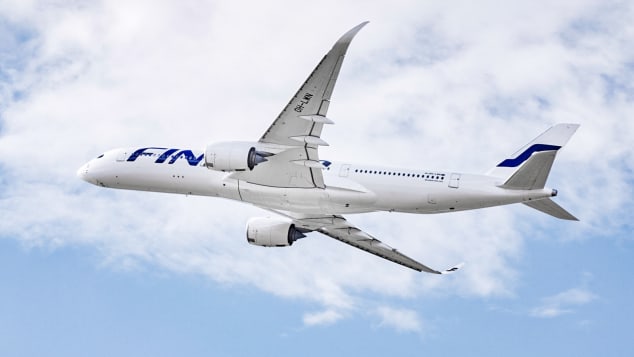
How airlines are plotting a new route to Asia
The closure of Russian airspace to some international carriers, including many in Europe, has forced airlines to seek alternate routes. For some flights, such as those linking Europe and Southeast Asia, that's especially problematic since Russia, the world's largest country, stands directly in between.
The problem is best illustrated by Finnair's flight from Helsinki to Tokyo. Before the invasion of Ukraine, planes from Finland's national carrier would take off and quickly veer into the airspace of neighboring Russia, crossing it for over 3,000 miles.
Advertisement
They would then enter China near its northern border with Mongolia, fly in its airspace for about 1,000 miles, before entering Russia again just north of Vladivostok.
Finally, they'd cross the Sea of Japan and turn south towards Narita Airport. The journey would take just under nine hours on average and cover nearly 5,000 miles.
The last such flight departed on February 26. The next day, Russia barred Finland from using its airspace, forcing the temporary cancellation of most of Finnair's Asian destinations, including South Korea, Singapore and Thailand.
By that point, however, the airline's route planners had long been at work to find a solution. "We made the first very rough calculation about two weeks before the actual closure of the airspace," says Riku Kohvakka, manager of flight planning at Finnair.
The solution was to fly over the North Pole. Instead of heading southeast into Russia, planes would now depart Helsinki and go straight north, heading for the Norwegian archipelago of Svalbard, before crossing over the pole and Alaska.
Then they would veer towards Japan flying over the Pacific, carefully skirting Russian airspace. That's not as straightforward as before: The journey now takes over 13 hours, covers approximately 8,000 miles, and uses 40% more fuel.
Finnair started flying via the polar route to Japan on March 9. So, how does an airline completely redesign one of its longest flights in just over a week?
"All major airlines have their own computerized flight planning system, which they use to plan routes and change them," explains Kohvakka. In the software, the airspace of specific countries can be crossed out and waypoints can be manually inserted to help it calculate alternative routes.
The next step is a new operational flight plan, which tells the crew what the planned route is, how much fuel they need, how much the plane can weigh and so on.
"From experience, we knew we had two possibilities: one via the north, and one via the south," says Kohvakka.
In addition to the polar route, Finnair can also reach Japan by flying south of Russia -- over the Baltics, Poland, Slovak Republic, Hungary, Romania, Bulgaria, Turkey, Georgia, Azerbaijan, Turkmenistan, Uzbekistan, Kazakhstan to China, Korea and then to Japan. It's longer, but if wind conditions are particularly favorable it can be used, resulting in a similar flight time.
Credit: CNN.com




